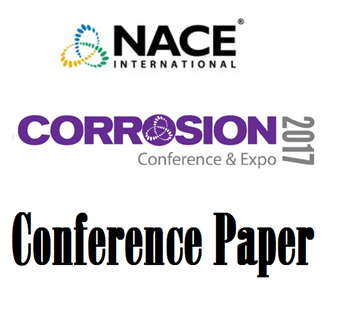Search
NACE Conference Papers
View as
Sort by
Display
per page
Elastomer and Plastic Compatibility With a Pyrolysis-Derived Bio-Oil
Product Number:
51319-13566-SG
Publication Date:
2019
$20.00
Elastomer Compatibility with a Pyrolysis-derived Bio-oil
Product Number:
51320-14613-SG
Publication Date:
2020
$20.00
Electrochemical Behavior of the Austenitic Stainless Steel Susceptibility to Sulfide Stress Cracking in H2S Containing Brines
Product Number:
51319-12854-SG
Publication Date:
2019
$20.00
Electrochemical Behavior Under Artificial Seawater and Intergranular Corrosion Performance of 6XXX Aluminum Alloys Series
Product Number:
51320-14620-SG
Publication Date:
2020
$20.00
Electrochemical Corrosion Behavior of Carbon Steel With and Without Residual Elements
Product Number:
51320-14245-SG
Publication Date:
2020
$20.00
Electrochemical Corrosion Behaviors Of Nuclear Waste Package Materials
Product Number:
51321-17009-SG
Publication Date:
2021
$20.00
Electrochemical Corrosion Evaluation Of Boral® Panels From The Decommissioned Zion Nuclear Power Plant Spent Fuel Pool
Product Number:
51321-16548-SG
Publication Date:
2021
$20.00
Electrochemical Crack Size Effect in Stress Corrosion Cracking and Corrosion Fatigue
Product Number:
51317--8853-SG
ISBN:
8853 2017 CP
Publication Date:
2017
$20.00
Electrochemical Injection of Corrosion Inhibitors and Chloride Extraction for Protection of Steel Reinforcement
Product Number:
51319-13451-SG
Publication Date:
2019
$20.00
Electrochemical Investigation Into the Influence of Monoethylene Glycol on CO2 Corrosion in the Presence of Acetic Acid
Product Number:
51321-16332-SG
Publication Date:
2021
$20.00
Electrochemical Investigation Of Alloys For Alkaline Water Electrolyzers
Product Number:
51321-16975-SG
Publication Date:
2021
$20.00
Electrochemical Investigation of Duplex Stainless Steel Cladded Carbon Steel Manufactured via Powder
Product Number:
51319-13538-SG
Publication Date:
2019
$20.00












